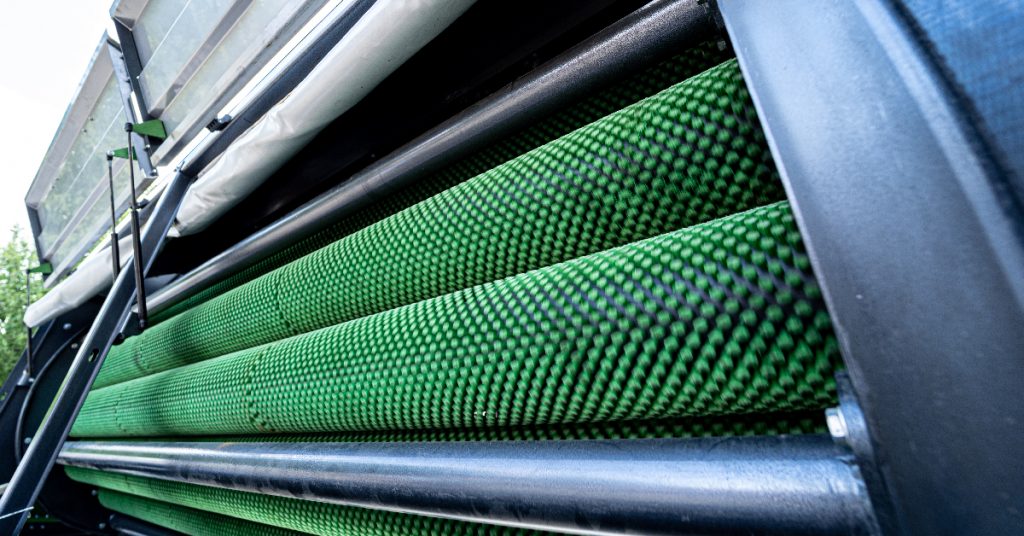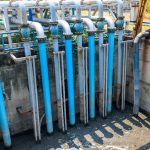Cooling towers are critical components in industrial and commercial facilities, helping regulate temperature in processes such as HVAC systems, manufacturing plants, refineries, and power stations. However, one of the most common and costly challenges in maintaining cooling towers is keeping the circulating water clean and free from suspended solids, scale, and biological contaminants. This is where the side-stream filter in cooling tower systems becomes indispensable.
In this blog, we’ll explore the function, benefits, and operational importance of a side-stream filtration system for cooling tower performance and longevity.
Table of Contents
Toggle- What is a Side Stream Filter in Cooling Tower Systems?
- Why Cooling Tower Water Needs Filtration?
- How a Side Stream Filtration System for Cooling Tower Works?
- Benefits of Using a Side Stream Filter in Cooling Tower Maintenance
- Applications of Side Stream Filter in Cooling Towers
- Key Considerations When Selecting a Side Stream Filter
- Ion Exchange Pressure Sand Filter for Reliable Suspended Matter Removal
- Conclusion
What is a Side Stream Filter in Cooling Tower Systems?
A side-stream filter cooling tower setup is a specialized water filtration system designed to continuously remove suspended solids, biological contaminants, and other impurities from a portion (typically 5–15%) of the recirculating water in a cooling tower system.
Unlike full-flow filtration (which filters all water), side-stream filtration works on a partial flow, making it highly efficient and cost-effective without disrupting normal operations.
Why Cooling Tower Water Needs Filtration?
Cooling tower water is prone to contamination from:
- Airborne dust and debris
- Corrosion products from piping
- Algae, bacteria, and biofilms
- Chemical treatment residue
- Make-up water impurities
These contaminants lead to:
- Fouling of heat exchangers and pipes
- Increased corrosion and scaling
- Reduced cooling efficiency
- Higher energy consumption
- Unscheduled maintenance and downtime
Installing a side-stream filter in cooling tower systems helps mitigate these risks by maintaining clean circulating water.
How a Side Stream Filtration System for Cooling Tower Works?
- Partial Water Intake
A small portion of the recirculating water is diverted from the main cooling tower loop into the side stream filter system. - Filtration
This water passes through one or more filtration technologies, such as:
- Sand filters
- Multimedia filters
- Cartridge filters
- Automatic self-cleaning filters
These systems remove suspended particles, biological matter, and chemical residues.
- Clean Water Return
The filtered water is then returned to the cooling tower basin or main loop, helping maintain better water quality throughout the system.
Benefits of Using a Side Stream Filter in Cooling Tower Maintenance
1. Improves Heat Exchange Efficiency
Clean water enhances heat transfer by preventing scale and biofilm buildup on heat exchanger surfaces, maintaining optimal performance.
2. Reduces Maintenance Frequency
By continuously removing particulates and sludge, a side-stream filter cooling tower setup reduces the need for manual basin cleaning and unscheduled maintenance shutdowns.
3. Extends Equipment Life
Minimized fouling and corrosion lead to longer life for pumps, chillers, piping, and other system components.
4. Enhances Chemical Treatment Performance
Filtration reduces the organic and inorganic load, allowing biocides, corrosion inhibitors, and anti-scalants to work more effectively.
5. Saves Water and Energy
With better water quality, systems can operate at higher cycles of concentration (COC), reducing blowdown and conserving water. Cleaner systems also consume less energy due to improved thermal efficiency.
6. Supports Compliance and Sustainability
Improved water quality helps meet environmental standards and supports sustainable operations by reducing chemical usage and water discharge.
Applications of Side Stream Filter in Cooling Towers
- HVAC cooling towers in commercial buildings
- Power plants and thermal stations
- Chemical and petrochemical processing units
- Food and beverage manufacturing
- Textile and paper industries
These industries often face high particulate loads or operate in dusty environments, making side side-stream filter of cooling tower systems especially critical.
Key Considerations When Selecting a Side Stream Filter
- Water flow rate and volume
- Type and size of contaminants
- Desired filtration level (e.g., 5–50 microns)
- System space and integration feasibility
- Automation and self-cleaning capabilities
A well-designed side-stream filtration system for a cooling tower should be easy to maintain, operate with minimal manual intervention, and be adaptable to system demands.
Ion Exchange Pressure Sand Filter for Reliable Suspended Matter Removal
The Ion Exchange Pressure Sand Filter is a robust filtration unit designed to remove suspended solids from water through a multi-layered media bed. Housed in a vertical or horizontal pressure vessel, the system includes frontal piping with valves, a graded sand bed supported by layers of silex and pebbles, a top distributor for even water distribution, and an efficient under-drain system to collect filtered water. Constructed using ASME Sec VIII, Div-I or IEI good engineering practices, it is available in MOC options such as MS, MSRL, and MSEP. During operation, raw water passes downward through the sand bed, capturing impurities treated with coagulants like alum. As filtration progresses, head loss increases, reducing flow until backwashing is required. The unit employs air scouring before backwash, which agitates the sand to effectively dislodge trapped particles, restoring filtration efficiency and allowing seamless return to service.
Conclusion
A side-stream filter in cooling tower systems is not just an optional accessory—it is a vital component for effective cooling tower care and performance. By continuously removing suspended solids and biological contaminants, it enhances operational efficiency, lowers costs, extends equipment life, and supports sustainable practices.







